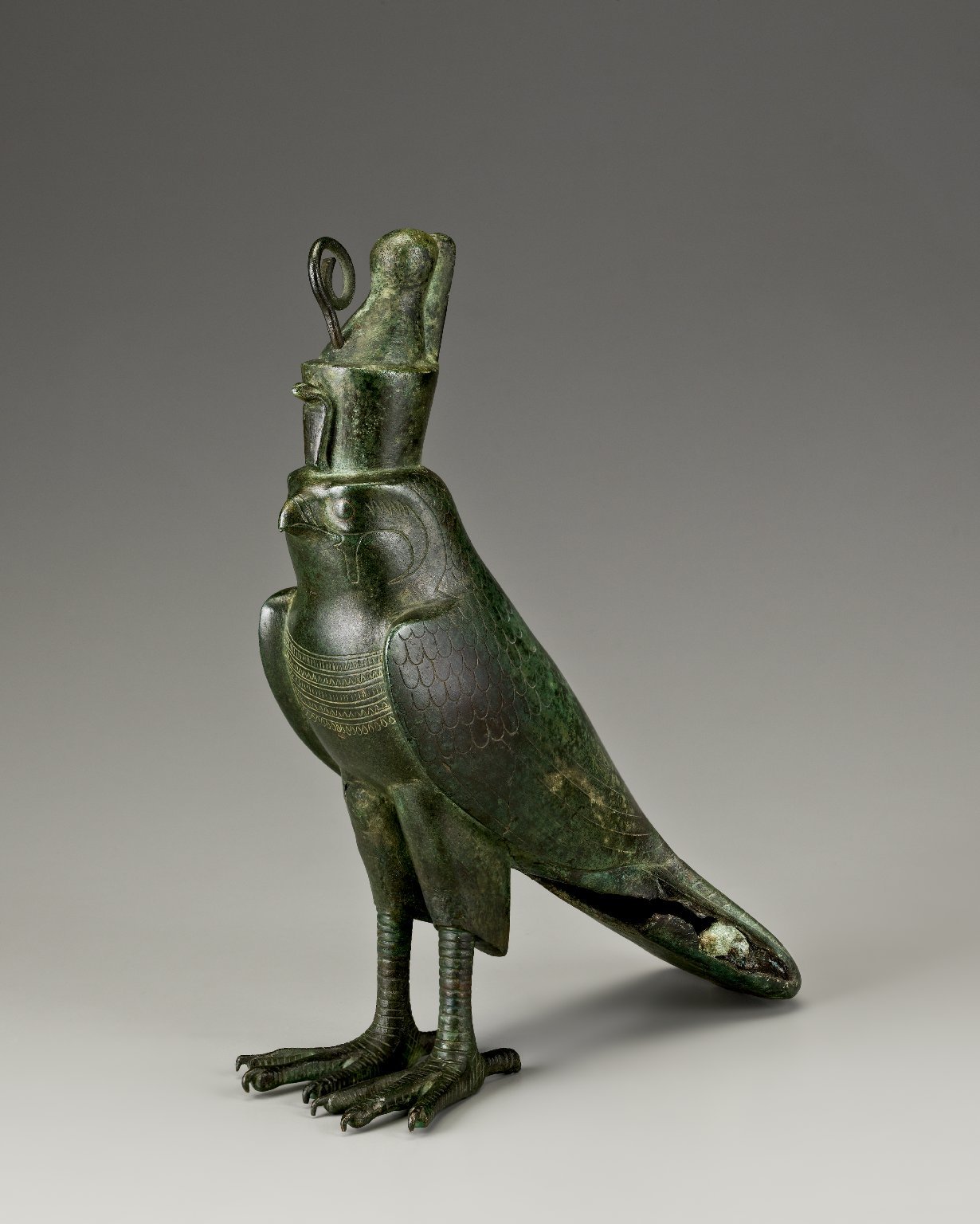http://brooklynmuseum.tumblr.com/post/132080609786/what-do-all-of-these-hats-symbolize-visitors
Brooklyn Museum

“What do all of these hats symbolize?”
Visitors have a lot of questions about Ancient Egypt. As a concept, it is something that everyone has at least heard of, but there are a lot of different aspects to know about and a lot of things that even scholars still do not know. One recurring theme in questions is that of clothing, jewelry, and headdresses. Headdresses are especially interesting because there are so many different types. One place you can see examples of several types is a case in the Brooklyn Museum’s Egyptian galleries of 23 small objects, mostly cast in bronze, a rare material to have survived from Ancient Egypt.
There is an excellent example of the typical pharaoh’s “Double Crown” on a falcon. The falcon symbolizes the god Horus who is the patron deity of the living pharaoh. The crown he wears is a combination of two ancient crowns. The outer one is the reed crown of Lower Egypt, the Nile Delta region, this surrounds the leather crown of Upper Egypt. The entire crown is surrounded by a uraeus. A uraeus is the image of a cobra reared up with its hood flared, but mouth closed. It is a symbol of protection for the pharaoh and it is associated with the goddess Ma’at who embodies truth and balance in the universe. Wearing both crowns indicates the pharaoh’s power over both regions and they were first combined in the Early Dynastic period when both entities were first ruled as one. This particular falcon, however, was cast in the Late or Ptolemaic period thousands of years later, a testament to the endurance of this symbol.
The next time you visit the Egyptian galleries, look for how figures are identified as individuals or by status, and remember, the answer is often in that hat.
Posted by Elizabeth Treptow
October 28, 2015
No comments:
Post a Comment